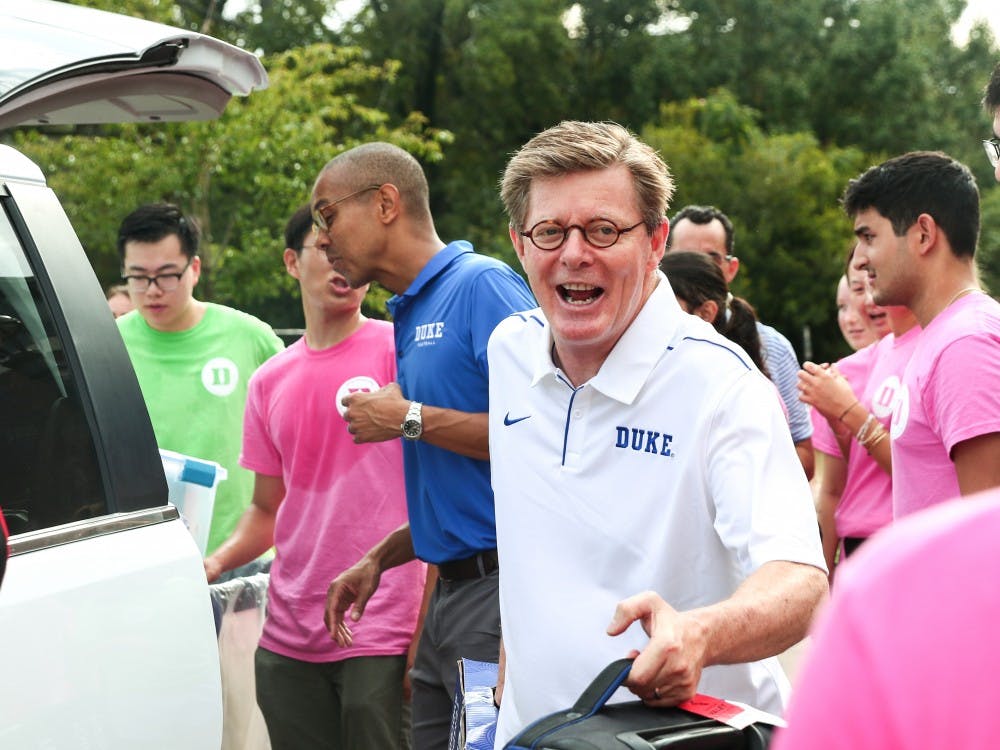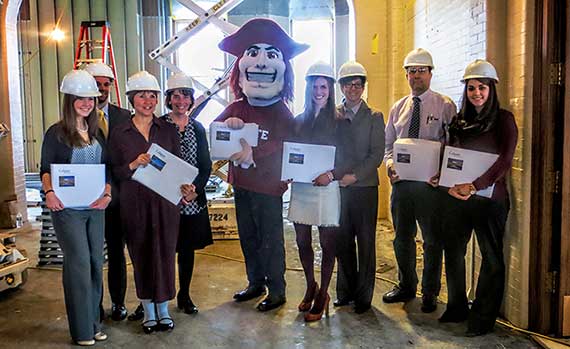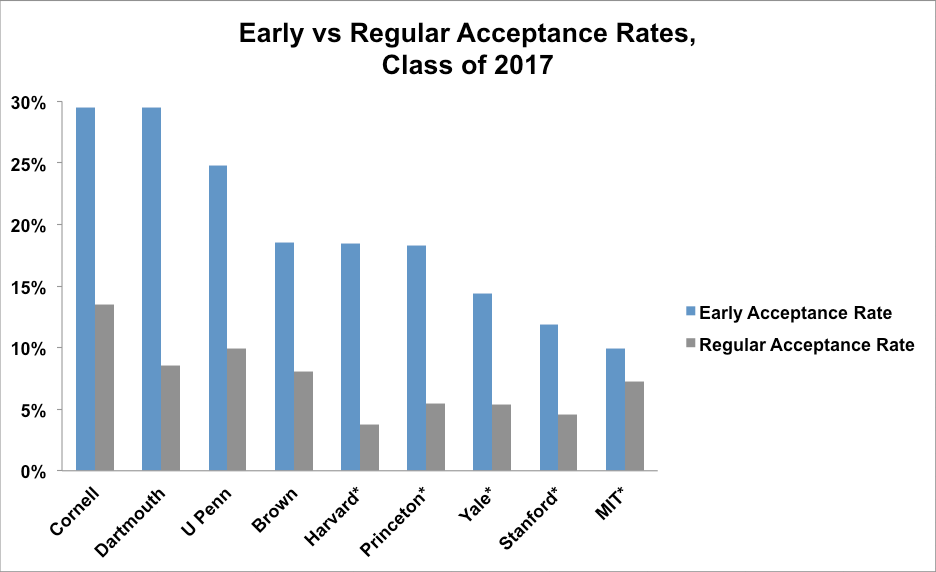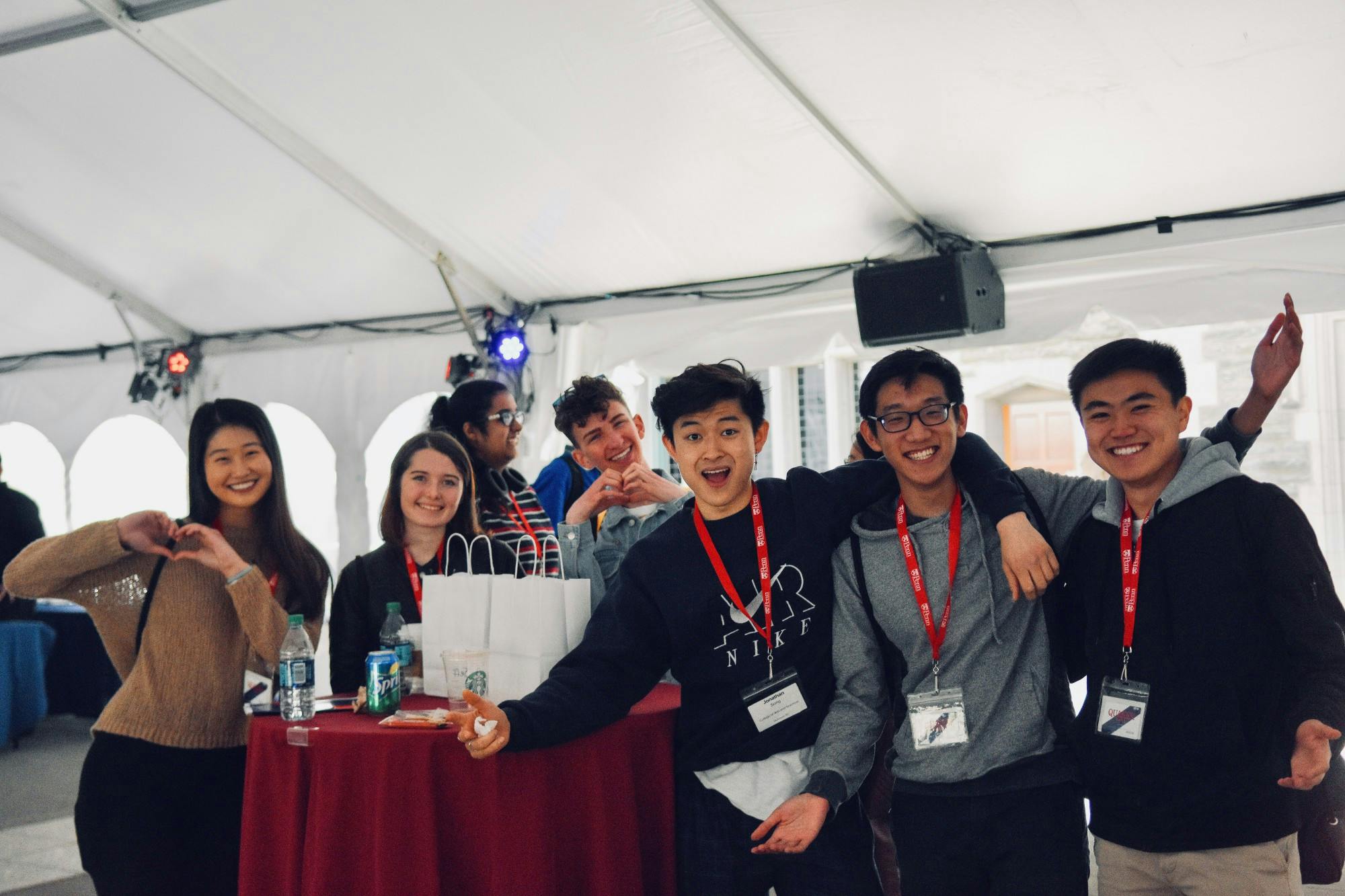While all four schools reported overall acceptance rates below 5%, with a 3.9% acceptance rate, Columbia is now the hardest Ivy League school to get into. For many decision makers and members of the public, machines are thought of as perfect rational actors. Early decision applications are a big commitment because you sign an agreement to enroll at the school when you apply. (between 70–90% annually) and are regularly accepted at prominent schools, including Vanderbilt, Columbia, Dartmouth and Harvard.
Below you will find the ED admission rates and regular decision rates for some of the most prestigious schools in the United States. The schools received a total of 60,548 applications as compared with 40,084 last year. The overall admit rate for the Class of 2025 thus dropped to an all-time low of 3.9%. Students accepted to the class of 2025 represent 44 U.S. states, the District of Columbia, Puerto Rico and 46 nations. T he University of Virginia has offered admission to 6,186 more applicants in its second phase of .
In all, between Early Decision and Regular Decision, 60,551 students applied to Columbia's Class of 2025. Of the students offered admission, 52% are women and 48% are men. Choosing to apply in the early rounds is always a major decision, particularly if students opt for a binding process such as Early Decision.
Last year, Columbia admitted 720 of the 4,461 applicants who applied early decision. Columbia University offers Early Decision but does not offer Early Action for freshman admissions. The early action admission program will be reinstated for next year's cycle.
At Rollins College, the acceptance rate for early and regular decision was the same – 58%. Columbia University received 60,551 applications for the class of and a total of around 2,218 were admitted to the two schools for an overall acceptance rate of 3.66%. JHU has multiple campuses in the Baltimore area, but the majority of undergraduate programs are housed in the red-brick Homewood Campus … Early Action and Early Decision Policies for the Top 50.
For the Class of 2024, Cornell admitted 1,576 out of 6,615 early decision applicants (a 7 percent increase over the past year's ED applicant numbers), for a 23.8 percent acceptance rate (a 1.2 percent increase over last year). If you want to get in, the first thing to look at is the acceptance rate. It is as if Thompson donned a bow-tie, and thought maybe poor people should work a little harder. Columbia is a racially diverse school, with approximately 52% of all students identifying themselves as persons of color.
Admission StandardsEliteApplicant CompetitionExtremeHow hard is it to get into Penn and can I get accepted? The school has a 8% acceptance rate ranking it #1 in Pennsylvania for lowest rate of acceptance. Last year, 3,740 out of 44,491 applicants were admitted making Penn an extremely competitive school to get into with a very low chance of acceptance – even for applicants with the highest scores and grades. Academically, it has exceptionally high requirements for admission test scores, generally admitting students who score in the top 4 percent. University of Pennsylvania typically accepts and attracts "A-" average high school students.
With over half of admitted students enrolling, acceptance by University of Pennsylvania is a prized outcome for many students. Most incoming freshmen graduated in the top ten percent of their high school class. Suppose a college needs to enroll 2,000 students in its incoming class. Suppose it receives roughly 12,000 applications each year in the regular admissions cycle—a realistic estimate for a prestigious, selective school.
Suppose, finally, that its normal yield for students admitted in the regular cycle is 33 percent—that is, for each three it accepts, one will enroll. So to end up with 2,000 freshmen on registration day, a college relying purely on a regular admissions program would send "We are pleased to announce" letters to 6,000 applicants and hope that the usual 33 percent decided to enroll. A regular-only admissions policy would thus mean that the college's selectivity rate—6,000 acceptances for 12,000 applicants—was an unselective-sounding 50 percent. The most intriguing twist on the SAT emphasis is applied at Georgetown, one of a handful of schools still offering nonbinding early action.
Whereas Harvard knows that nearly all the students admitted EA will enroll, Georgetown knows that most of the academically strongest candidates it admits early will end up at Yale or Stanford if they get in. Georgetown sticks with EA in part because Charles Deacon, its dean of admissions, is a prominent critic of the increased use of binding programs and the sense of panic and scarcity they create among students. Because colleges often highlight the average SAT scores of the students they admit, not just the ones who enroll, a policy like Georgetown's can make a school look better. You'll also receive an admission decision much sooner than you would under regular decision.
Early action and early decision let prospective students apply to their first-choice schools sooner than regular applicants. The UCLA Acceptance Rate 2021, is calculated by dividing the total number of admitted students by the number of applicants that applied. Meanwhile, the acceptance rate for early action, early decision, transfer students, freshmen, and international applicants also varies. Students who apply early decision enjoy a higher admissions rate than those who apply through regular decision. For example, Ivy League institutions typically admit between 5 and 11 percent of students who apply during regular decision but admit 14 to 23 percent of those who apply early decision.
Other institutions such as American University, Trinity University, and Providence College have early acceptance rates that are 50 to 70 percentage points higher than the regular acceptance rate. Researchers estimate that applying early decision provides the equivalent benefit of an extra 100 points on the SAT, the standardized test widely used for college admissions. The number of early decision applications at Dartmouth College—2,664—increased by almost 29% this year. "There's a widespread perception that applying ED puts students at a disadvantage for financial aid. That may be the case at schools with limited resources, because they know accepted students are committed to coming, so the college could short them on financial aid.
But like everything else in the admissions game, there is no hard and fast rule. At least one study on ed found just the opposite — that financial aid is more generous for Early Decision students because schools sometimes run out of money for regular decision admits". In ED programs students start their senior year ready to choose the one college they would most like to attend, and having already taken their SATs. An early applicant is allowed to make only one ED application, and it is due in the beginning or the middle of November.
The college has about a month to deliberate and responds by mid-December. If the answer is no, the student has two weeks to send out regular applications to schools on his or her backup list. If the answer is yes, the process is over, because by virtue of applying early, the student has promised to attend the college if accepted. Mainly through counselors, who know when a student has been admitted ED and agree not to send official transcripts to other schools.
Of the 56,333 students who applied to Penn's Class of 2025 in the early and regular rounds, 3,202 were admitted, leading to an overall acceptance rate of 5.68 percent. The 3,202 admitted students to the Class of 2025 included 1,194 students who were admitted through the early decision round. The admission rate for the ED round was 15 percent out of 7,962 applicants. Last year, 42,205 students applied to Penn's Class of 2024 in the early and regular rounds and 3,404 were admitted, leading to an overall acceptance rate of 8.07 percent. Out of the total 3,404 admitted to the Class of 2024, 1,269 students were admitted through the early decision round. The admission rate for the ED round was 19.67 percent out of 6,453 applicants.
University Of Pennsylvania Early Decision Admission Rate For the Class of 2023, 44,960 students applied to in the early and regular rounds and 3,345 were admitted, leading to an overall acceptance rate of 7.44 percent. Early decision admissions policies allow high school students to apply earlier to a university, typically by November of their senior year, with the students committing to attend that university if accepted. The binding nature of early decision means that only students who can commit to a university before seeing their financial aid offer can take advantage of the policy. Most students cannot apply under such terms, especially as the cost of college is increasing almost eight times faster than wages. Some 45 percent of admitted students who are US citizens or permanent residents self-identified as minorities.
First-generation college students make up 12 percent of the admitted class. Although schools are reporting lower acceptance rates for early applicants, students who apply early still have a better chance at acceptance than they do in the regular admissions period. I cannot stress enough how much it helps to apply early if you're sure you want to attend Penn. For reference, this year, the early decision acceptance rate at the university was 22%, whereas only 7.3% of applicants were accepted in the regular decision round. By the time students of color apply to college, they have already had to navigate an educational system that, thanks to structural racism, spends $23 billion less on districts in which the majority of students are not white. These districts receive fewer teachers, classes, and resources to prepare students for higher education.
And the students of color and low-income students who do overcome these barriers then run into a college admissions process that rewards students for having affluent parents. This manifests in a variety of ways, from private tutoring for SATs and ACTs to access to advanced placement courses, sports, and other extracurriculars that can give affluent applicants a leg up in college admissions. In early November, thousands of hardworking students across the country will send in their early decision or early action applications for coveted spots at the nation's most prestigious colleges.
Unfortunately, the reality is that both policies, especially early decision, reinforce the racial inequities in the U.S. education system. It means having strong grades and SAT scores by the end of junior year and not thinking that one's record needs to be rounded off or enriched by senior-year performance. It means that one's family has enough money to be unaffected by the possibility of competitive financial offers. It means that one is emotionally prepared to deal with a rejection if necessary and then to rush regular applications into the mail right away.
The colleges take three months to consider the applications, and respond by early April. Students have until May 1—the single deadline in this cycle adhered to by most colleges—to send a deposit to the school they want to attend and a "No, thanks" to any other that has accepted them. The colleges tally the returns and adjust the size of their incoming classes by accepting students on their waiting lists. University of Pennsylvania admissions are extremely selective with a low acceptance rate.
Applicants even with above-average scores have very little chance of getting admitted. Essay and LOR should be emphasized while making the application as a good essay and strong recommendation can set you apart in this tough competition. The admission decision are announced by Mid December for Early Decision applicants and by April 1 for Regular Decision applicants. Penn's yield rate—the percentage of accepted students who elect to enroll, divided by the total number of students who are admitted was 70% in 2019.
The takeaway is that an exceptionally high number of those admitted to Penn ultimately choose to attend the university. Part of the explanation for this is that the majority of the class was brought aboard via binding early decision. For comparison, elite schools such as Duke, Northwestern, Notre Dame, and Claremont McKenna all have yield rates under 60%. A whopping 56,333 applications were received by Penn for the Class of 2025, the largest applicant pool to date; only 3,202 individuals were accepted. Working out to 5.68% acceptance rate, this was the most selective year in the university's lengthy history.
Applicants for the Classes of 2016 and 2017 saw admit rates in excess of 12%; the Class of 2018 is when the school's admit rate first dipped below 10%. The two years prior to the Class of 2025 cycle, 8.07% and 7.4% were accepted. Moreover, when a college or university fills a substantial portion of its class with early decision acceptances, fewer spots remain for regular decision applicants. Colleges and universities such as Davidson, Emory, Swarthmore, and Tufts fill close to half of their freshman spots through early decision. The University of Pennsylvania enrolled 53 percent of its class of 2023 from its early decision applicant pool.
One approach would be simple reform—accepting the inevitability of ED programs but trying to modify them so as to reduce the attendant pressure and paranoia. High schools and colleges alike could agree to report either more or less data than they currently do. Now suppose that the college introduces an early-decision plan and admits 500 applicants, a quarter of the class, that way.
It is very likely to receive at least as many total applications as before—say, 1,000 in the ED program and 11,000 regulars. But now it will have to send out only 5,000 acceptance letters—500 earlies plus 4,500 to bring in 1,500 regular students. Therefore its selectivity will improve to 42 percent from the previous 50, and its yield will be 40 percent rather than the original 33, because all those admitted early will be obliged to enroll. A counselor at a private school that has long sent many of its graduates to Penn showed me a list of the students from that school who had applied to Penn last year. Some students far down in the class who applied early were accepted; some students thirty or forty places above them in class rank who applied regular were denied. The counselor did not stop to calculate exactly how much an early decision was "worth" in terms of grade-point average, but it clearly made a difference.
The real question about the ED skew is whether the prospects for any given student differ depending on when he or she applies. Last fall Christopher Avery, of Harvard's Kennedy School of Government, and several colleagues produced smoking-gun evidence that they do. The authors analyzed five years' worth of admissions records from fourteen selective colleges, involving a total of 500,000 applications, and interviewed 400 college students, sixty high school seniors, and thirty-five counselors. They found that at the ED schools an early application was worth as much in the competition for admission as scoring 100 extra points on the SAT. For instance, a student with a combined SAT score of 1400 to who applied early was as likely to be accepted as a regular-admission student scoring 1500 to 1600. An early student scoring 1200 to 1290 was more likely to be accepted than a regular student scoring 1300 to 1390.
The acceptance rate of 3.66 percent is below last year's 6.15 percent when Columbia admitted 2,465 applicants from 40,084 applications. We need voices speaking against those false beliefs to prevent naive acceptance of ML from becoming the norm. In most cases, the chances of acceptance increase, sometimes dramatically. Other benefits such as a commitment from the school to meet 100% of need without loans (e.g., the University of Pennsylvania) can motivate students to apply ED.
That said, higher ED acceptance rates do not indicate that lower quality candidates are being accepted, but that quality candidates who are fully committed to an institution to apply ED are. Additionally, applying early means knowing sooner, typically in four-to-six weeks following the ED deadline. Your child can apply to Penn via a binding early decision agreement by November 1st. They'll receive an answer of accepted, deferred to the regular decision pool, or denied by mid-December.
Penn admits roughly half of their incoming class through early decision, but the UPenn early decision acceptance rate is still low, around 15 percent. Some university leaders understand the discriminatory effect of early decision policies and the benefits of expanding access to educational opportunity. Harvard University ended its early decision program in 2006 and now uses a restrictive early action policy that is nonbinding.
After the University of Virginia ended its early decision policy in 2007, the dean of admissions reported increased class diversity and academic accomplishment. However, Virginia reinstated its early decision policy this year, supposedly to provide more options for students to apply, becoming the only major state university with a binding early admissions policy. It remains to be seen how this policy reversal will affect diversity on Virginia's campus. Early action is a more inclusive policy—though still far from perfect—that allows students to apply and be notified of their acceptance early but without a binding agreement. Admitted students then have several months to compare school options and decide which one is the best fit.




























No comments:
Post a Comment
Note: Only a member of this blog may post a comment.